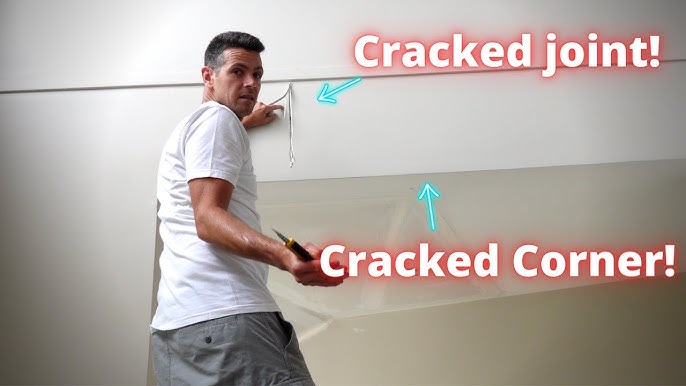Essential Tips for Effective Drywall Repair and Installment Strategies
Effective drywall repair and installation calls for a mindful method. Comprehending the sorts of drywall and having the right tools is important. Precise measurements and proper strategies can substantially affect the outcome. Several ignore vital actions like taping and sanding, which can make or damage the last appearance. As jobs proceed, typical difficulties may occur that require focus. Discovering these tips can bring about an extra successful and polished finish.
Understanding Different Sorts Of Drywall
Understanding the different kinds of drywall is important for any effective repair or installment task. Drywall, generally called gypsum board, comes in several ranges customized for details applications. Requirement drywall is one of the most extensively made use of type, ideal for general indoor walls and ceilings. Moisture-resistant drywall, commonly eco-friendly in color, is created for areas prone to humidity, such as kitchen areas and shower rooms. Fireproof drywall, generally colored pink or purple, is crafted to hold up against greater temperature levels and is usually utilized in garages or near heating systems. Furthermore, soundproof drywall helps decrease sound transmission, making it appropriate for multi-family homes or taping studios. Specialized drywall, like cement board, is utilized in wet locations like showers or tub borders. Understanding these kinds aids in selecting the ideal material for each project, ensuring durability and efficiency in repair services or brand-new installations.
Essential Tools for Drywall Fixing and Setup
Having the right devices is vital for efficient drywall fixing and installation. A quality energy knife is important for reducing drywall sheets specifically. A drywall T-square aids ensure straight edges, while a taping knife is necessary for using joint substance smoothly over seams. Furthermore, a drywall saw permits cutting out damaged areas or fitting drywall around fixtures.
For hanging drywall, a power drill with drywall screws is indispensable, as it enables safe and quick setup. A level is likewise vital to verify that the drywall is straight and properly straightened. Once it has actually dried out, a fining sand block or post sander is necessary for smoothing out joint substance. Lastly, a measuring tape is essential for exact dimensions, protecting against waste and making certain an appropriate fit. Geared up with these tools, people can tackle drywall jobs efficiently, resulting in professional-looking results.
Step-by-Step Overview to Repairing Holes and Cracks
When attending to holes and cracks in drywall, having the right tools and products is essential for an effective fixing. This guide describes the needed products and supplies a clear, step-by-step procedure to efficiently restore the surface area. Recognizing these components will aid ensure a smooth finish and resilient outcomes.
Tools and Products Needed
A well-equipped toolkit is essential for reliable drywall fixing and installation. Key tools include an utility knife for cutting drywall, a measuring tape to ensure exact sizing, and a drywall saw for bigger holes. A putty blade is necessary for using joint compound efficiently, while a sanding block or post sander assists achieve a seamless coating. For patching, a roll of fiberglass fit together tape or paper tape is required to reinforce joints. Furthermore, a drill and screws are needed for safeguarding new drywall pieces. Important materials are composed of joint compound, guide, and paint to finish the fixing. Having these devices and materials available guarantees a smoother, extra efficient repair work process, producing professional-looking outcomes.
Repair Work Process Steps
Fixing holes and cracks in drywall calls for a systematic technique to assure a seamless finish. The location bordering the damages should be cleansed extensively to get rid of dirt and particles. Next, for small splits, a putty blade is made use of to use a joint substance equally over the location. For bigger holes, a spot is required; the damaged section is reduced out, and a new piece of drywall is suited location, safeguarded with screws. When the patch remains in position, joint compound is applied to blend the sides. After drying, fining sand the area smooth is important. The repaired surface must be topped and painted to match the bordering wall, ensuring an unnoticeable repair service.
Strategies for Putting Up Drywall Panels
Setting up drywall panels requires careful planning and precise execution to assure a smooth and professional surface. First, it is necessary to gauge the wall room properly and cut the panels to fit, guaranteeing that they line up with the studs. Placing the panels horizontally is normally suggested, as this can improve the architectural honesty and decrease the variety of joints.
Utilizing drywall screws, installers ought to secure the panels every 16 inches along the studs, ensuring a company hold. It is vital to avoid overdriving the screws, which can damage the paper surface. For edges and sides, making use of an energy blade allows for tidy cuts and a tight fit.

Finishing Touches: Taping, Mudding, and Sanding
As soon as the drywall panels are firmly in area, the following essential step involves the complements of taping, mudding, and sanding. Insulation is essential for creating a seamless shift between panels and hiding joints. A quality drywall tape, either paper or fiberglass mesh, Drywall Repair Ogden UT must be used over the joints, guaranteeing it sticks correctly to the mud that will certainly be used following.
Mudding, or applying joint compound, adheres to the taping procedure. This substance loads voids and smooths out the surface. A very first layer should be applied generously, feathering the sides to blend with the drywall. After the preliminary layer dries out, succeeding layers might be needed for a flawless finish.
Fining sand is needed to achieve a smooth surface. A fine-grit sandpaper needs to be utilized to gently ravel any kind of imperfections. Care should be taken to prevent over-sanding, which can damage the drywall - Drywall Installation Ogden Utah. Properly implemented, these ending up touches develop an expert appearance prepared for paint
Tips for Preserving Your Drywall After Installation
Preserving drywall after installation is important to maintaining its appearance and structural stability. Regular cleaning is essential; dirt and dust can collect, so gentle wiping with a moist towel is suggested. House owners must additionally evaluate for any kind of indications of wetness or mold and mildew, particularly in high-humidity locations like kitchen areas and shower rooms. If any type of damages takes place, it is very important to address it without delay to avoid additional issues.
Making use of furnishings pads can help prevent scratches or damages from hefty products. In addition, painting the drywall with a high-grade, cleanable paint gives an additional layer of defense and makes future cleansing much easier. Stay clear of making use of abrasive cleansers or tools, as these can damage the surface area. Finally, keeping a stable indoor climate with ideal humidity levels will help stop buckling or splitting in time. By complying with these tips, one can guarantee that drywall continues to be in excellent condition for several years to come.
Frequently Asked Questions
How Much Time Does Drywall Require To Totally Dry After Installation?

Can I Install Drywall Over Existing Drywall?
Yes, drywall can be set up over existing drywall, yet it is important to assure the underlying surface area is secure and appropriately prepared. This technique can enhance insulation and decrease setup time, though it might include weight.
What Is the very best Way to Soundproof Drywall?
The finest way to soundproof drywall involves utilizing specialized soundproofing materials, such as resilient networks, acoustic caulk, and sound-dampening drywall. These techniques properly reduce sound transmission in between areas, improving total acoustic performance in living areas.
How Do I Select the Right Drywall Density?
To pick the appropriate drywall thickness, consider the application and place. Standard household wall surfaces commonly make use of 1/2 inch, while ceilings or specialized locations may need 5/8 inch for extra strength and soundproofing capacities.
Exist Eco-Friendly Drywall Options Available?
Yes, eco-friendly drywall options are readily available. These include items made from recycled materials, plaster boards with low volatile natural compounds (VOCs), and those utilizing sustainable manufacturing processes, supplying environmentally-conscious options for construction and improvement tasks.
Having the right devices is vital for reliable drywall repair work and installment. For hanging drywall, a power drill with drywall screws is important, as it enables fast and secure installment. Trick devices consist of an energy knife for reducing drywall, a tape procedure to assure precise sizing, and a drywall saw for larger holes. Yes, drywall can be set up over existing drywall, but it is important to assure the underlying surface area is safe and adequately prepared. The best means to soundproof drywall includes using specialized soundproofing products, such as resilient networks, acoustic caulk, and sound-dampening drywall.